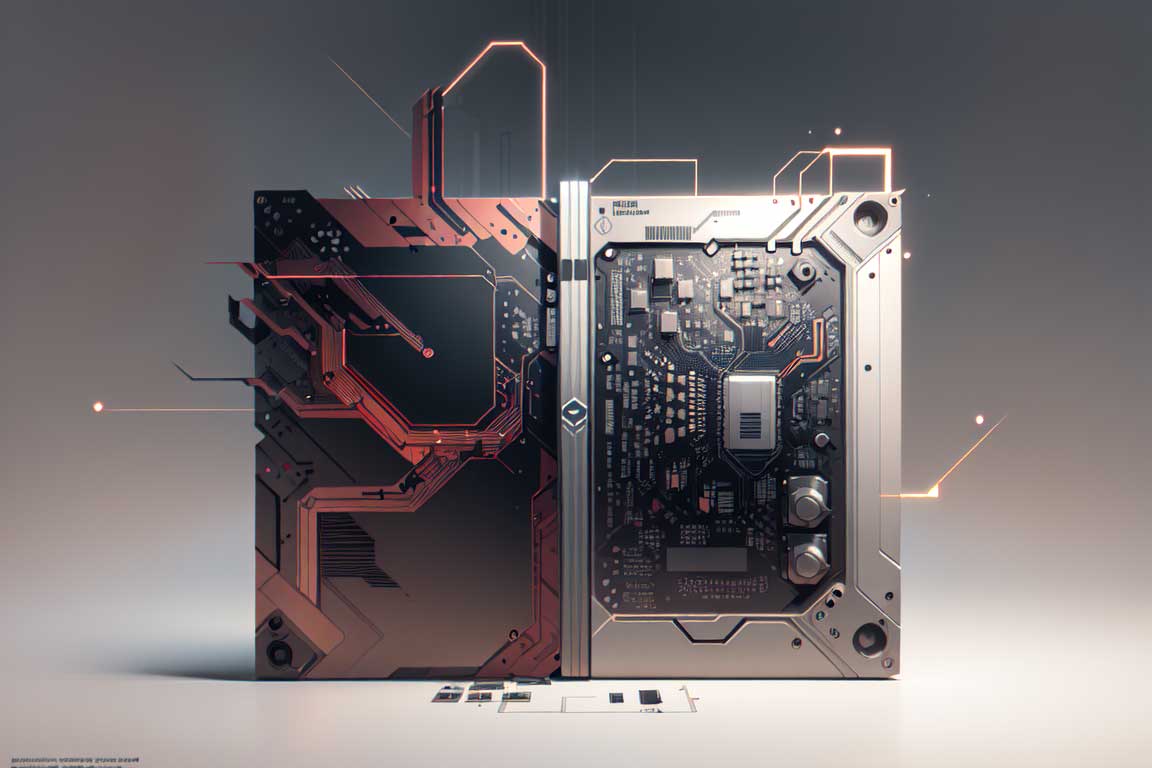AI: The Engine Powering Tomorrow’s Economy
Artificial Intelligence (AI) is no longer a futuristic fantasy—it’s a transformative force reshaping the global economy. From streamlining operations to unlocking new markets, AI is driving efficiency, innovation, and growth across industries. As we navigate a rapidly changing world, AI’s role in bolstering economic prosperity is undeniable, with far-reaching implications for businesses, workers, and consumers alike.
One of AI’s most significant contributions is its ability to enhance productivity. In manufacturing, AI-powered automation optimizes supply chains, predicts maintenance needs, and reduces downtime. For example, predictive algorithms can analyze equipment data to anticipate failures, saving millions in unplanned outages. In retail, AI personalizes customer experiences, boosting sales through tailored recommendations. According to a 2023 McKinsey report, AI could add $13 trillion to global GDP by 2030, with sectors like healthcare, education, and agriculture reaping substantial benefits.
AI is also democratizing innovation. Small businesses, once limited by resources, can now leverage AI tools to compete with industry giants. Cloud-based AI platforms enable startups to analyze data, automate marketing, and optimize pricing without hefty investments. This levels the playing field, fostering entrepreneurship and spurring economic dynamism. In developing economies, AI is bridging gaps in access to education and healthcare, empowering communities and creating new markets.
Job creation is another area where AI shines. While concerns about automation displacing workers persist, AI is generating demand for new roles—data scientists, AI ethicists, and machine learning engineers, to name a few. Upskilling programs are helping workers transition into these fields, ensuring inclusive growth. In agriculture, AI-driven precision farming is increasing crop yields by up to 20%, creating jobs and strengthening food security in rural regions.
However, AI’s economic promise comes with challenges. Ethical concerns, such as bias in algorithms, and the need for robust regulations must be addressed to ensure equitable benefits. Investments in digital infrastructure and education are critical to prevent a widening gap between AI adopters and laggards.
As AI continues to evolve, its potential to drive economic growth is boundless. By fostering innovation, enhancing productivity, and creating opportunities, AI is not just a tool—it’s the backbone of a thriving, inclusive economy. The future is bright, and AI is lighting the way.
AGI vs AI: Understanding the Future of Intelligence
AGI vs AI: Understanding the Future of Intelligence
Artificial Intelligence (AI) and Artificial General Intelligence (AGI) are terms often tossed around interchangeably, but they represent vastly different concepts shaping our technological future. AI, as we know it today, powers everything from voice assistants to recommendation algorithms. AGI, however, is the horizon of intelligence that could redefine humanity’s relationship with machines.
AI refers to specialized systems designed for specific tasks. Think of Siri recognizing your voice or Netflix suggesting your next binge-watch. These systems excel within narrow domains, leveraging machine learning to process data, identify patterns, and make decisions. However, their capabilities are limited—they can’t step outside their programming. A chess-playing AI, for instance, can’t write poetry or solve physics problems.
AGI, on the other hand, is the holy grail of cognitive computing. It describes a machine with human-like general intelligence, capable of learning, reasoning, and adapting across diverse tasks without being explicitly programmed. An AGI could seamlessly switch from composing music to diagnosing diseases or even debating philosophy. It’s not just about mastering one skill—it’s about mastering any intellectual challenge a human might tackle.
The leap from AI to AGI is monumental. Current AI thrives on vast datasets and predefined rules, while AGI would require an understanding of context, creativity, and perhaps even consciousness. Researchers at organizations like xAI are pushing toward this frontier, but challenges like computational complexity and ethical concerns loom large.
Why does this matter? AI enhances efficiency; AGI could transform society. From solving climate change to exploring the cosmos, AGI’s potential is boundless—but so are the risks. As we stand on the cusp of this revolution, understanding the distinction is crucial for navigating the future responsibly.
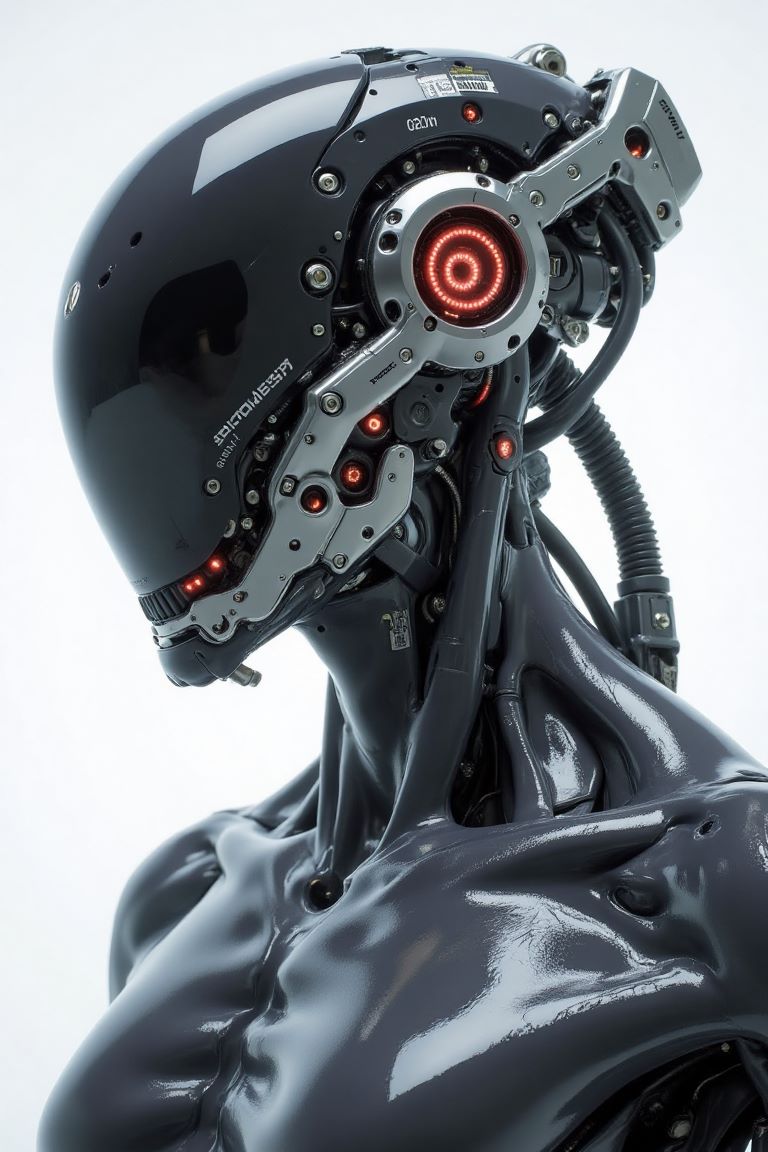
The Value of Smaller Local AI Conferences
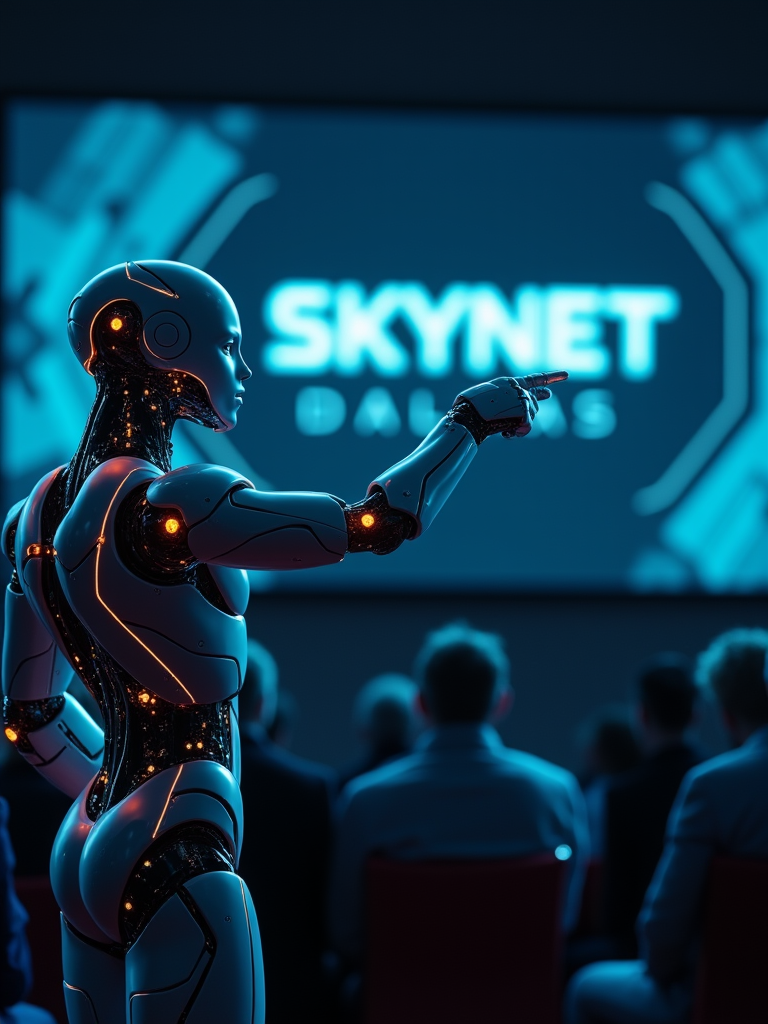
While global AI conferences like NeurIPS or AI Expo dazzle with scale, smaller local AI conferences offer superior benefits in accessibility, engagement, and relevance. These events empower diverse communities and drive innovation in ways larger gatherings often can’t match.
Accessibility is a key advantage. International conferences require costly travel, visas, and high registration fees, excluding many talented students, researchers, and developers from less affluent regions. Local conferences eliminate these barriers, offering affordable entry and minimal travel. A data scientist in rural India or a startup founder in West Africa can participate, gaining access to cutting-edge knowledge and networks.
Engagement is another strength. With hundreds rather than thousands of attendees, local events foster intimate settings for meaningful dialogue. Participants can interact directly with speakers, collaborate in hands-on workshops, and build lasting professional relationships. This closeness sparks mentorship and local partnerships that fuel innovation.
Finally, Skynet’s local conferences excel at addressing regional priorities. AI’s applications—such as precision farming in the Midwest or urban mobility in the Southeast—demand context-specific solutions. These events focus on local challenges, delivering practical outcomes. By prioritizing smaller AI conferences, we cultivate inclusive, connected, and impactful AI ecosystems from the ground up.
AI in Cybersecurity: A Double-Edged Sword of Protection and Peril
AI in Cybersecurity: A Double-Edged Sword of Protection and Peril
Artificial intelligence (AI) is revolutionizing cybersecurity, offering powerful tools to defend against increasingly sophisticated threats while simultaneously arming adversaries with new ways to exploit vulnerabilities. As organizations race to secure their digital assets, AI is proving to be both a shield and a challenge, reshaping the cybersecurity landscape in profound ways.
On the defensive front, AI enhances threat detection and response. Machine learning algorithms analyze vast amounts of data—network traffic, user behavior, and historical attack patterns—to identify anomalies in real time. Companies like Darktrace use AI to mimic the human immune system, autonomously neutralizing threats before they escalate. This proactive approach is critical as cyberattacks grow in scale; IBM reports that AI-driven tools can reduce breach detection time from weeks to hours, saving millions in potential damages. Additionally, AI automates routine security tasks, such as patch management and phishing detection, allowing overstretched teams to focus on strategic priorities.
Yet, AI’s power cuts both ways. Cybercriminals are leveraging it to craft advanced attacks. Generative AI can create convincing deepfakes or phishing emails tailored to specific targets, evading traditional filters. Adversarial AI can even manipulate systems by subtly altering data, tricking security models into overlooking threats. The 2024 Verizon Data Breach Report notes a rise in AI-assisted attacks, highlighting how tools once exclusive to defenders are now widely accessible via dark web marketplaces.
The arms race is on. Organizations are countering with AI-powered innovations like zero-trust architectures, which verify every user and device continuously, and predictive analytics to anticipate vulnerabilities. Meanwhile, collaboration between AI systems and human experts is key—machines excel at speed and scale, but human intuition remains vital for nuanced threats.
AI is undeniably transforming cybersecurity into a dynamic battlefield. Its dual nature demands vigilance, adaptability, and investment. As threats evolve, so must defenses, ensuring AI remains a net positive in safeguarding our digital world.

AI’s Next Five Years: Transforming the Business Landscape
AI’s Next Five Years: Transforming the Business Landscape
Over the next five years, artificial intelligence (AI) is poised to redefine general business operations, driving unprecedented efficiency, innovation, and adaptability across industries. As AI technologies mature and become more accessible, companies of all sizes will harness its power to optimize processes, enhance decision-making, and unlock new revenue streams, fundamentally reshaping the way business is done.
One of AI’s most immediate impacts will be on operational efficiency. By 2030, AI-driven automation will handle repetitive tasks—think data entry, inventory management, and customer inquiries—freeing human workers for strategic roles. McKinsey predicts that 30% of business activities could be automated within this timeframe, with tools like robotic process automation (RPA) already saving companies millions in labor costs. This shift will allow firms to scale rapidly without proportional increases in overhead.
Decision-making will also evolve as AI delivers deeper insights. Advanced analytics, powered by machine learning, will process vast datasets to forecast trends, assess risks, and identify opportunities with precision. For instance, retailers will use AI to predict demand spikes, while financial institutions will refine credit scoring models. Gartner estimates that by 2027, 70% of enterprises will rely on AI for critical decisions, reducing human bias and accelerating response times in volatile markets.
Customer engagement will become hyper-personalized. AI will analyze behavior patterns to tailor marketing campaigns, product recommendations, and support experiences, boosting loyalty and sales. Small businesses, too, will benefit as affordable AI tools—like chatbots or CRM platforms—level the playing field against larger competitors.
However, challenges loom. Workforce reskilling will be essential as roles shift, and ethical concerns around data privacy and AI bias will demand robust governance. Still, businesses that embrace AI strategically will thrive, gaining agility and resilience. Within five years, AI won’t just support business—it will be its backbone, driving a future where adaptability and intelligence are the ultimate competitive edges.
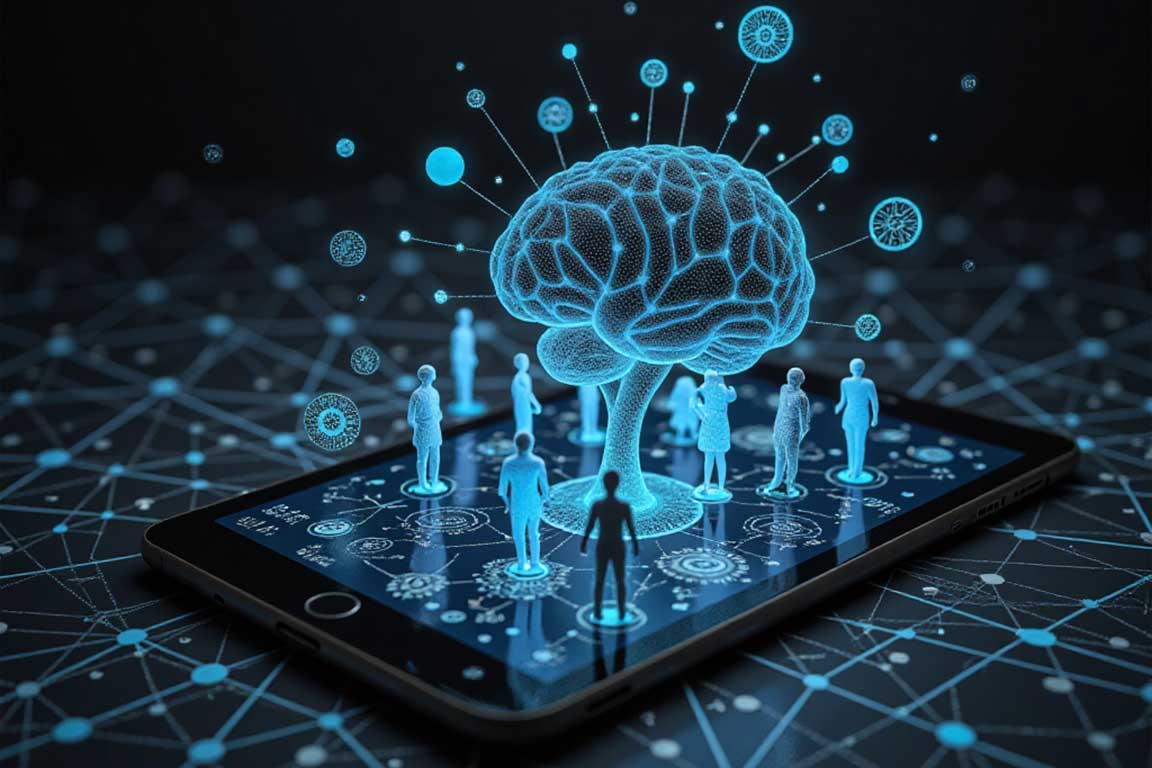
AI-Powered Web Design: Redefining Digital Creativity
AI-Powered Web Design: Redefining Digital Creativity
Artificial intelligence (AI) is revolutionizing web design, transforming it from a labor-intensive craft into a dynamic, data-driven process that blends creativity with efficiency. As businesses and individuals strive to stand out in an increasingly crowded digital landscape, AI is emerging as a game-changer, streamlining workflows, enhancing user experiences, and pushing the boundaries of what’s possible online.
One of AI’s most impactful contributions to web design is automation. Tools like Wix ADI and Bookmark use AI to generate fully functional websites in minutes based on user inputs such as industry type or design preferences. These platforms analyze vast datasets of design trends and layouts, delivering professional-grade sites without requiring coding expertise. This democratization of web design empowers small businesses and entrepreneurs to establish an online presence quickly and affordably.
AI also elevates user experience (UX) through personalization. By leveraging machine learning, websites can adapt in real-time to individual visitors—adjusting content, layouts, or recommendations based on browsing behavior and preferences. Companies like Netflix and Amazon have set the standard, using AI to curate tailored interfaces that keep users engaged. Web designers now integrate similar algorithms to create adaptive, intuitive sites that feel uniquely crafted for each visitor.
Beyond aesthetics, AI enhances functionality. Chatbots powered by natural language processing, such as those built with Google’s Dialogflow, provide seamless customer support, while AI-driven analytics tools like Hotjar predict user pain points, allowing designers to optimize navigation and conversion rates. Additionally, AI assists in accessibility, automatically adjusting contrast or suggesting alt text for images to ensure inclusivity.
Creativity isn’t sidelined, either. Tools like Adobe Sensei augment designers’ capabilities, offering intelligent suggestions for color schemes, typography, or image edits. As AI continues to evolve, it’s not replacing web designers but amplifying their potential, enabling faster iteration, smarter decisions, and websites that are as functional as they are beautiful. The future of web design is here—and it’s undeniably AI-driven.
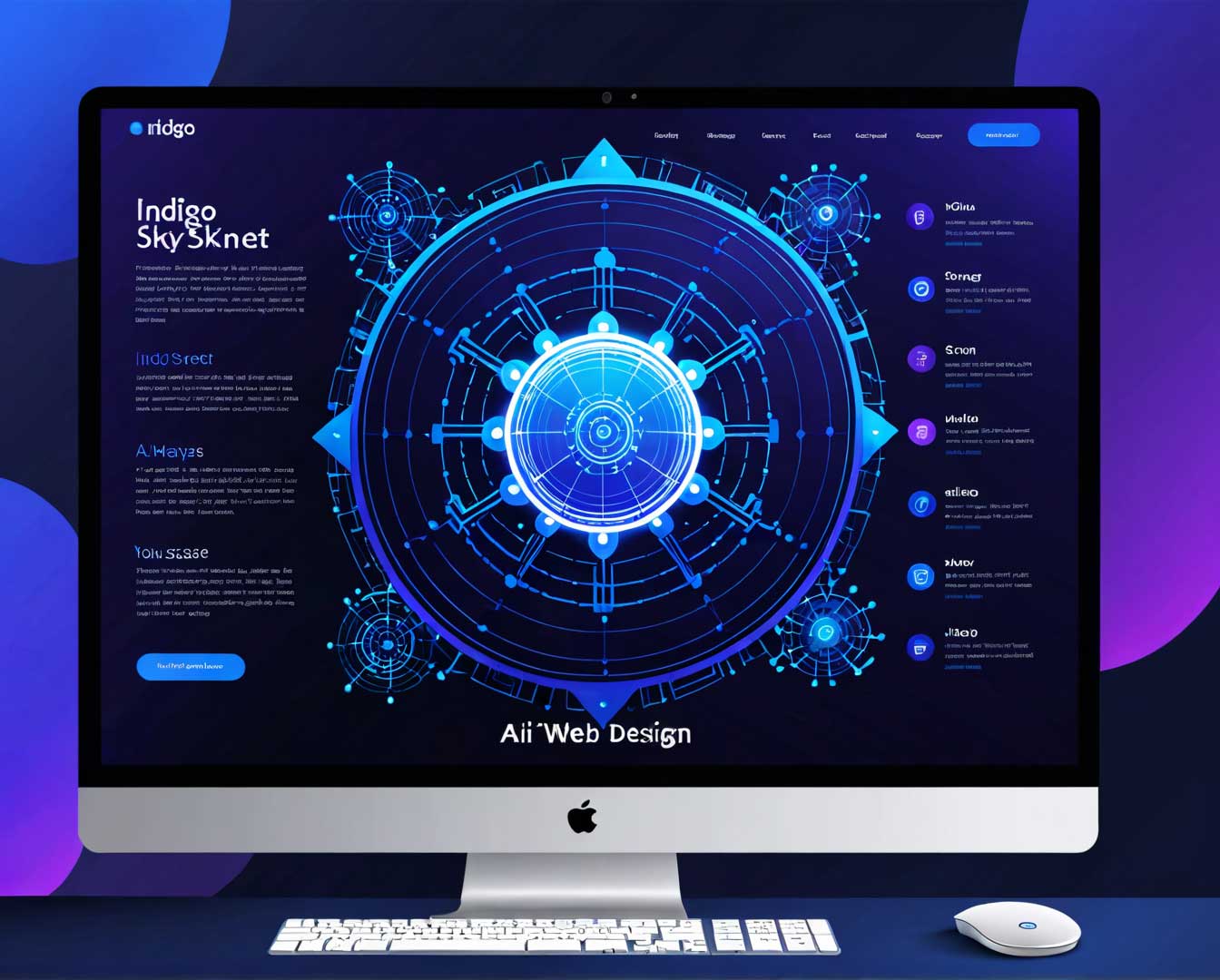
AI Revolutionizes Product Design: A New Era of Innovation
Artificial intelligence (AI) is transforming product design, ushering in a wave of creativity, efficiency, and precision that is reshaping industries worldwide. From consumer goods to cutting-edge technology, AI is no longer just a tool—it’s a collaborative partner in the design process, enabling designers to push boundaries and deliver products that are smarter, more sustainable, and finely tuned to user needs.
One of the most significant ways AI is changing product design is through generative design. Powered by machine learning algorithms, generative design allows designers to input specific parameters—such as materials, cost, or performance requirements—and receive hundreds of optimized design options in minutes. Companies like Autodesk and Siemens have integrated this technology into their software, enabling engineers to explore innovative shapes and structures that human minds might never conceive. For example, Airbus used generative design to create a lighter, more fuel-efficient partition for its A320 aircraft, reducing both weight and environmental impact.
AI also accelerates prototyping and testing. Traditional methods often involve time-consuming iterations, but AI-driven simulations can predict how a product will perform under various conditions, identifying flaws before physical models are built. This not only cuts costs but also speeds up time-to-market. In the automotive industry, Tesla leverages AI to refine vehicle components, ensuring safety and efficiency with minimal trial and error.
Moreover, AI enhances personalization. By analyzing vast datasets—customer preferences, usage patterns, and market trends—AI helps designers craft products tailored to individual tastes. Adidas, for instance, uses AI to design custom-fit shoes based on a wearer’s foot scan and running style, blending aesthetics with functionality.
Sustainability is another frontier where AI shines. It optimizes material use, reduces waste, and suggests eco-friendly alternatives, aligning product design with growing environmental demands. As AI continues to evolve, its role in product design will only deepen, promising a future where innovation is faster, smarter, and more human-centric than ever before.
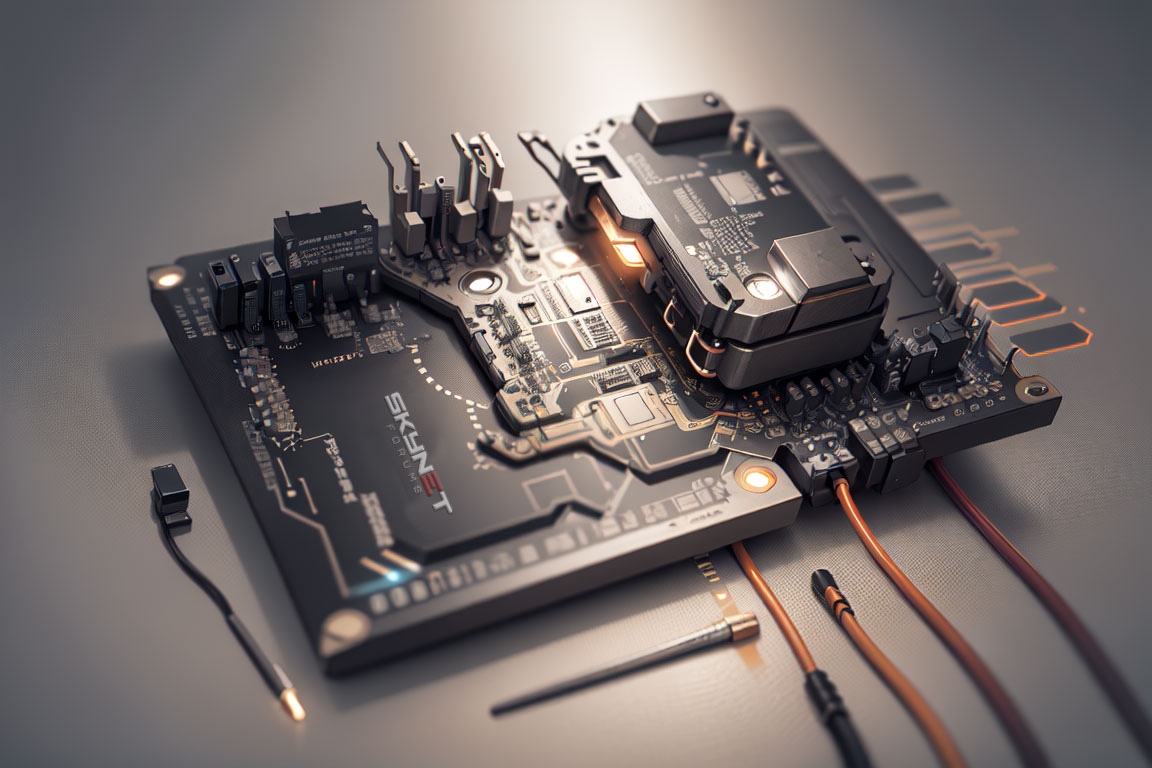
AI Models of 2025: A Year of Reasoning and Revolution
In 2025, artificial intelligence has taken a leap forward with a flurry of innovative models reshaping the technological landscape. This year’s releases, driven by fierce competition and a push for specialization, highlight advancements in reasoning, multimodality, and affordability, transforming industries and everyday life.
OpenAI started strong with o3-mini, launched in January, a compact reasoning model excelling in STEM tasks like coding and math. Priced for accessibility, it set the tone for efficiency-focused releases. Later, GPT-4.5 arrived in February, boasting enhanced chat capabilities for ChatGPT Pro users. Google countered with Gemini 2.5 Pro Experimental in March, a reasoning titan for web app development, and Veo 2, a video generation model integrated into YouTube Shorts, rivaling OpenAI’s refined Sora Turbo.
Chinese firms stole the spotlight with cost-effective innovation. DeepSeek’s R1, a 685-billion-parameter reasoning model, debuted in January, matching GPT-4o’s prowess at a third of the cost. Its successor, DeepSeek-V3, added multimodal flair, processing text and images with precision. Baidu’s ERNIE X1, launched in March, offered autonomous tool use and rivaled R1 at half the price. MiniMax’s visual-language model achieved 94.7% accuracy in visual question-answering, targeting technical fields.
Anthropic’s Claude Sonnet 3.7 introduced hybrid reasoning, letting users tweak processing time, while xAI’s Grok 3 leveraged real-time X data to shine in math and science. Smaller players like Alibaba’s Qwen2 and Cohere’s Aya Vision prioritized multilingual accessibility.
These 2025 models signal a shift to practical, specialized AI, blending power with efficiency. As the race intensifies, the focus is on real-world impact—making AI not just smarter, but more usable than ever.
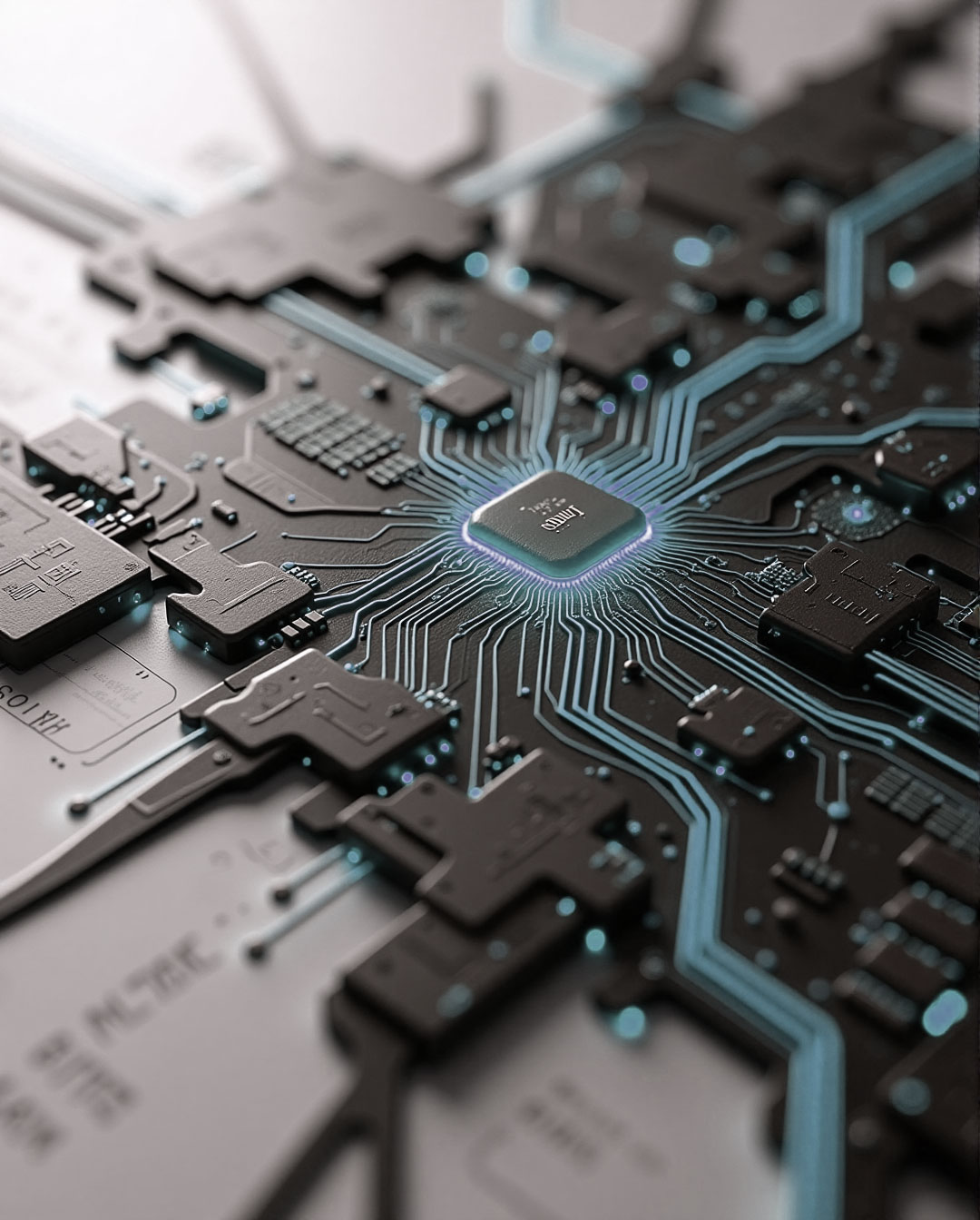
The Top AI Jobs Defining 2025-2026
Careers at the Forefront of Innovation
Artificial intelligence (AI) is no longer a futuristic concept—it’s a cornerstone of modern industry, and by 2025-2026, its influence on the job market will be undeniable. As companies race to integrate AI into everything from healthcare diagnostics to supply chain logistics, a handful of roles are emerging as the most sought-after. These top AI jobs blend technical prowess, creative problem-solving, and ethical foresight, offering lucrative salaries and long-term relevance. Here’s a deep dive into the careers set to dominate the AI landscape.
Machine Learning Engineers: The Algorithm Architects
Machine Learning Engineers will remain the backbone of AI innovation. Tasked with designing and optimizing algorithms, they enable systems to learn from data—powering autonomous vehicles, fraud detection, and personalized e-commerce. Proficiency in Python, TensorFlow, and cloud platforms like AWS is non-negotiable, as is a knack for handling massive datasets. By 2025, the U.S. Bureau of Labor Statistics projects a 36% growth in demand, with salaries averaging $150,000-$180,000 annually. Tech giants like Google and emerging startups alike will vie for these experts, making it a top-tier career.
AI Research Scientists: Pioneers of the Next Frontier
For those with a passion for discovery, AI Research Scientists are the trailblazers. These PhD-holders dive into cutting-edge fields like deep learning, reinforcement learning, and natural language processing, driving breakthroughs that redefine AI’s limits. Think of them as the minds behind ChatGPT’s successors or quantum AI models. By 2026, their work will fuel advancements in robotics and climate modeling, with salaries often exceeding $200,000. Companies like DeepMind and academic partnerships will keep this role elite and highly competitive.
Generative AI Engineers: Creativity Meets Code
Generative AI Engineers are the rising stars of 2025-2026, blending technical skill with artistic flair. They build models like GANs (Generative Adversarial Networks) to create AI-generated content—music, visuals, even legal drafts. As businesses tap into AI for marketing and product design, demand will soar. Salaries range from $130,000 to $180,000, reflecting their unique ability to craft prompts and fine-tune outputs. With tools like Midjourney evolving, this role will bridge human creativity and machine potential, appealing to hybrid thinkers.
MLOps Engineers: The Deployment Maestros
Scaling AI isn’t glamorous, but it’s essential, and that’s where MLOps Engineers shine. They ensure machine learning models move seamlessly from lab to production, managing pipelines, monitoring performance, and troubleshooting failures. By 2026, as enterprises deploy AI at scale—think smart cities or real-time analytics—these engineers will be indispensable. Familiarity with DevOps tools like Docker and Kubernetes is key, with salaries averaging $140,000-$160,000. Their work keeps AI reliable, making them unsung heroes of the revolution.
AI Ethics Specialists: Guardians of Responsibility
As AI’s societal impact grows, AI Ethics Specialists will take center stage. Tasked with ensuring fairness, transparency, and compliance with regulations like the EU’s AI Act, they’re the conscience of the industry. By 2026, their role will expand as public scrutiny intensifies—think bias in hiring algorithms or privacy in facial recognition. Salaries of $120,000-$160,000 reflect their blend of technical and philosophical expertise. Governments, NGOs, and corporations will lean on them to balance innovation with trust.
The Big Picture
By 2025-2026, these AI jobs will define the intersection of technology and humanity. Demand will outstrip supply, pushing salaries higher and sparking a talent war. Yet, success hinges on adaptability—AI’s rapid evolution means today’s skills must evolve too. For aspiring professionals, the message is clear: dive in, specialize, and stay curious. The future belongs to those who shape it.
Gearing Up for the AI Revolution: How Companies Can Prepare for Tomorrow’s Technologies
Artificial intelligence (AI) is no longer a distant promise—it’s a present reality reshaping industries from healthcare to retail. With breakthroughs in machine learning, natural language processing, and robotics accelerating, companies face a critical juncture: adapt or be left behind. Preparing for the wave of new AI technologies requires strategic planning, cultural shifts, and proactive investment. This article outlines how businesses can ready themselves for an AI-driven future, ensuring they harness its potential while navigating its challenges.
Understand the AI Landscape
The first step is comprehension. AI isn’t a monolith—it spans tools like predictive analytics, generative models, and autonomous systems, each with unique applications. Companies must assess which technologies align with their goals. A retailer might leverage AI for inventory optimization, while a manufacturer could deploy robotic process automation (RPA) on the factory floor. McKinsey’s 2024 report notes that 70% of executives see AI as a competitive edge, yet only 21% fully grasp its capabilities. To bridge this gap, businesses should conduct AI audits—mapping current processes against potential AI solutions—and consult with experts or pilot small-scale projects to test feasibility.
Staying informed is equally vital. AI evolves rapidly, with innovations like quantum computing or neuromorphic chips poised to redefine possibilities. Subscribing to industry journals, attending conferences like NeurIPS, or partnering with tech firms can keep companies ahead of the curve. Ignorance isn’t bliss—it’s a liability.
Build an AI-Ready Workforce
Technology is only as good as the people using it. Preparing for AI means reskilling employees and fostering a culture of adaptability. Routine tasks—data entry, basic customer service—are already ceding ground to AI, but human oversight remains essential. A 2023 Gartner study predicts that by 2030, 80% of jobs will require some AI interaction, from managing chatbots to interpreting algorithmic outputs.
Start with education. Offer training in AI basics—coding, data analysis, or even prompt engineering for generative tools. Upskilling doesn’t demand every employee become a data scientist; it’s about fluency. For instance, marketing teams could learn to use AI-driven analytics platforms like Tableau, while HR might adopt AI for talent screening. External programs, like Coursera’s AI courses or Google’s Digital Garage, can supplement in-house efforts.
Leadership must also evolve. Executives need AI literacy to make informed decisions, not just delegate to IT. Companies like Siemens have mandated AI training for managers, ensuring strategic alignment. Meanwhile, hiring should prioritize hybrid skills—think data-savvy creatives or ethically minded engineers—to blend human intuition with machine precision.
Invest in Infrastructure
AI demands robust technological foundations. Legacy systems—clunky databases or outdated software—won’t cut it. Companies must upgrade to cloud-based platforms, high-performance computing, and secure data pipelines. Amazon Web Services (AWS) and Microsoft Azure offer scalable AI solutions, from pre-built models to custom development environments. A 2024 Deloitte survey found that 63% of AI adopters cited infrastructure as their biggest hurdle, underscoring the need for investment.
Data is AI’s lifeblood, so quality matters. Businesses should centralize and clean their data, eliminating silos that hinder machine learning. Tools like Snowflake or Databricks can streamline this process. Security is non-negotiable—AI systems are prime targets for breaches. Encrypting data and adopting zero-trust architectures can mitigate risks, especially as regulations like the EU’s AI Act tighten scrutiny.
Hardware is another consideration. While cloud computing suffices for many, industries like manufacturing or healthcare may need on-site AI chips—think NVIDIA’s GPUs or Google’s TPUs—for real-time processing. Budgeting for these upgrades now prevents costly retrofits later.
Foster an AI-First Culture
Technology alone isn’t enough; mindset matters. Companies must cultivate an AI-first culture where innovation is encouraged and fear of change is minimized. This starts at the top. Leaders should champion AI as a partner, not a threat, dispelling myths of mass job loss. Highlight success stories—perhaps how AI boosted sales forecasts by 20%—to build buy-in.
Encourage experimentation. Set up AI sandboxes where teams can test ideas without risking core operations. Google’s “20% time” philosophy, letting employees explore side projects, could inspire AI-driven breakthroughs. Reward risk-taking, even if it fails—learning is the goal.
Transparency is key. Employees fear AI when its purpose is opaque. Explain how it enhances, not replaces, their work. A call center adopting chatbots might frame it as freeing agents for complex cases, not cutting jobs. Engage unions or worker councils early to align interests.
Navigate Ethics and Regulation
AI’s power comes with responsibility. Companies must prepare for ethical dilemmas—bias in hiring algorithms, privacy in customer data—and a thickening web of regulations. The EU’s AI Act, effective 2026, will classify systems by risk, imposing fines up to 6% of revenue for noncompliance. California’s AI transparency laws and China’s algorithmic oversight signal a global trend.
Appoint AI ethics officers to oversee deployment, ensuring fairness and accountability. Audit models for bias—IBM’s AI Fairness 360 toolkit can help—and document decision-making for regulators. Partner with legal teams to stay compliant, especially in high-stakes sectors like finance or healthcare.
Public trust is at stake. A 2024 Edelman survey found 60% of consumers distrust AI-using companies unless ethics are clear. Proactive policies—public AI principles, opt-in data use—can turn skepticism into loyalty.
Collaborate and Innovate
No company can master AI alone. Partnerships with tech giants, startups, or academia can accelerate progress. IBM’s AI alliances with universities have yielded cutting-edge research, while small firms often bring niche expertise. Open-source platforms like TensorFlow or PyTorch offer cost-effective starting points, fostering collaboration.
Innovation should be continuous. Dedicate R&D budgets to AI, targeting industry-specific challenges—say, AI diagnostics in medicine or supply chain optimization in logistics. Monitor competitors; if a rival leaps ahead with AI, complacency isn’t an option.
The Road Ahead
Preparing for AI isn’t a one-time task—it’s an ongoing journey. Companies that act now—understanding the tech, upskilling workers, upgrading systems, and embracing ethics—will lead the pack. Those that lag risk obsolescence. The WEF estimates AI could add $15 trillion to the global economy by 2030, but only for those ready to seize it.
The stakes are high, but so are the rewards. AI isn’t just a tool; it’s a paradigm shift. By building a foundation today, businesses can thrive in a tomorrow where intelligence—human and artificial—defines success.

